Royalties from books
Many of our supporters have written books and have chosen to donate some of their royalties to us.
Their books cover a wide range of subjects, often including experiences of RAF life, or research into aviation history.
When you buy any of the titles listed below, we receive a donation from the author.
In December 1957, Martin Jones set off from the UK with his family on the SS Chusan to spend three years at RAF Changi in Singapore.
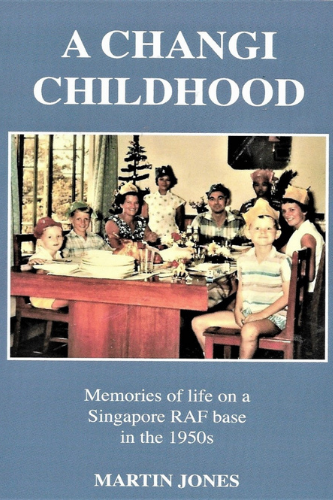
Martin was eight when they arrived, and his book documents many of the people, places activities and events which he encountered whilst they were there. These include the Changi village and RAF base, the Lloyd Leas estate, schools, churches, transport, wolf cubs and sports, and family trips further afield in Singapore, Malaya, Vietnam, Hong Kong and Japan.
Martin’s book also provides an update on visits made to Changi and Singapore in 1994 and 2002, along with trips to Malaysia, Hong Kong and Thailand, including the River Kwai.
The book includes copious numbers of photos and commentaries from Martin’s parents, Trevor and Nancy and, running to over 130 pages, is a must-read for anyone who remembers the RAF presence at Changi, Singapore and the Far East generally.
All proceeds from sales of this book will be split between the RAF Benevolent Fund and the RAF Association.
Retailing at £12.99, the book is available through Waterstones.
Stephen's story begins on 15th June 1944 when his Lancaster bomber is shot down over Arras, his account is both a gripping and inspiring story of survival and an invaluable record of the realities of life as a Prisoner of War during WWII.
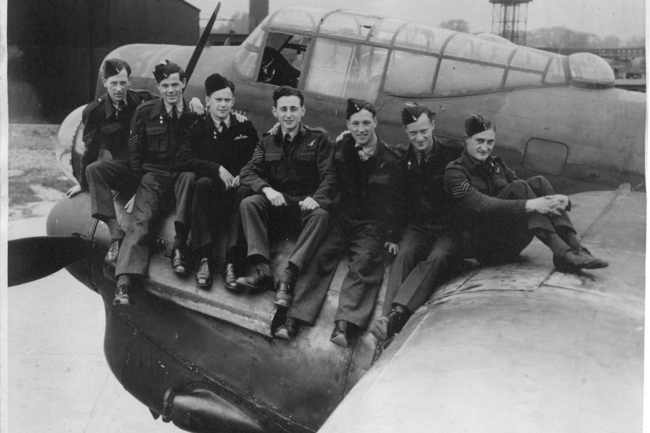
As part of a 7-man crew of a Lancaster bomber that was shot down over Arras in Northern France. Three men were able to parachute out but sadly the other four perished as the burning plane crashed. Stephen landed on a roof somewhere. He shortly afterwards met up with Nat, the crew’s Wireless Officer.
They met French people who were generally helpful and wouldn’t give them away to the Germans but after trying days evading the enemy they were eventually captured on the outskirts of Amiens. They saw a number or prisons both civil and military, were interrogated at most of them but eventually ended up at a prison in the east of Germany called Luft 7.
In April 1945 the Russians were entering Germany from the east and it was decided to move all the prisoners west – by marching, and in whatever weakened and hungry state they were. It was an awful time in the snow, the blizzards and the cold. Eventually they ended up for a while in the buildings of Stalag III-A camp at Luckenwalde which was used as a transit camp for huge movements of prisoners. Steve Masters had more worrying moves and events before he was finally home in May 1945.
This book can be purchased as a Kindle edition for £4.99 from Amazon.
A book about heroism in wartime France, Andrée's War was written by her daughter Francelle, and tells a story of the French Resistance during the Second World War and the part Andrée played.
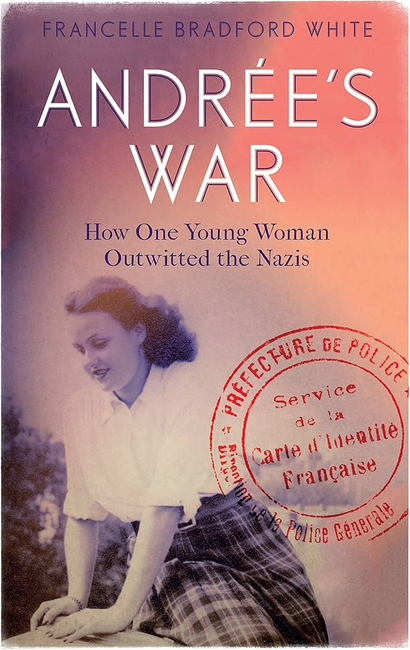
Andrée Griotteray was only 19 when the Germans invaded France. She was just another young teenager, in search of fun and frivolity. Instead she found herself living in an occupied city, forced to work alongside the men who had invaded her country.
Unable to stand by and do nothing, her younger brother Alain first set up an underground newspaper, urging readers to join the resistance, before creating his own resistance network. Andrée risked her life to help him in both endeavours.
You can read more about Andrée's story and order the book on the website, andreeswar.com.
After the war Andrée was awarded four medals for her actions – The Médaille de la Résistance, The Croix de Guerre with silver star, and L'Ordre National du mérite (Le ruban bleu) and The Légion d’honneur (1995)
All royalties and profits from book sales go to The Andree Griotteray White Charitable Trust which has just donated £50,000 towards the work of the Fund’s Community Engagement Workers and the support they provide for RAF Family members struggling with dementia.
55,573 is the number of Royal Air Force Bomber Command aircrew who lost their lives during the Second World War. That's more than the total who serve in Britain's RAF today. With a terrifying 46% combat attrition rate, an Avro Lancaster Bomber was one of the most dangerous places to be during the conflict.
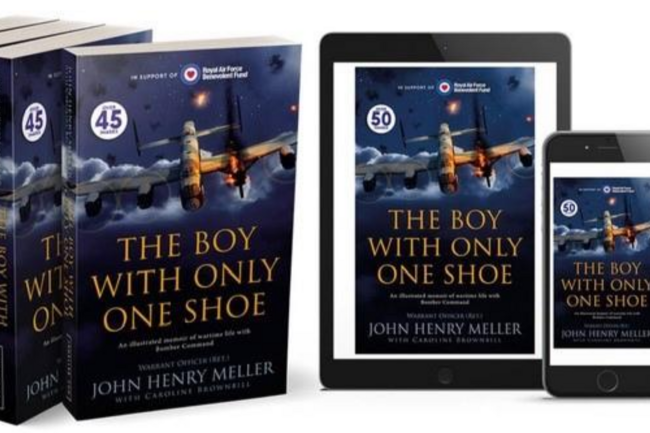
Yet no one was enlisted to become aircrew: all were volunteers. So, at a time when Britain stood resolute in its fight against tyranny and oppression, young men from across the globe did just that.
At just 18 years old, John Henry Meller was one such man. The ordeals and sacrifices endured by John and his generation were crucial to the success of the Allied nations.
In the words of Winston Churchill, Great Britain's wartime leader: "Hitler knows that he will have to break us in this island or lose the war. If we can stand up to him, all Europe may be free and the life of the world may move forward into broad, sunlit uplands... Let us therefore brace ourselves to our duties, and so bear ourselves that, if the British Empire and the Commonwealth last for a thousand years, men will still say, 'This was their finest hour.'"
As few remain to bear witness to that time, John - together with daughter Caroline Brownbill - have chosen to document his vivid recollections of wartime life.
Join him as he shares what it was like to crew a Lancaster over Europe, during the darkest days of the War. To learn more about the authors, please visit: www.JHMeller.com.
This book can be purchased for £8.42 for a paperback or £3.99 for a Kindle edition from Amazon.
In the final months of the Second World War, on the 12 and 29 January 1945, two Lancaster bombers crashed in fields close to the village of Hoveringham in Nottinghamshire, with the loss of both crews.
Over six decades later, Helen Nall unexpectedly came across a fragment of aircraft alloy in one of her husband's fields.
Unaware, until then, of the story of the Lancasters, she talked to a local farmer who remembered the incident and decided to investigate further. Over the next year Helen tracked down the families of the aircrews and pieced together the final moments of the two Lancasters.
This is her remarkable account of how the war affected Hoveringham and the surrounding villages.
Her book is a tribute to the 55,573 Bomber Command aircrew who did not live to see the end of the Second World War, but particularly to the fourteen young men who died so violently within sight of her home.
The book is priced at £9.99 and the proceeds are split between the RAF Benevolent Fund and the Bomber Command Memorial.
To place an order for the book or to find out more, please email lyn.doney@rafbf.org.uk.
A pilot's captivating autobiography that traces the development of night-flying from the early days of the Battle of Britain to the final triumph over Germany.
What was it like to soar through the night sky fighting enemy aircraft in the Second World War? After completing intensive training Roderick Chisholm was thrust into the height of the Blitz to protect his country in the black of night.
Guided by rudimentary radar he, along with his fellow pilots of 604 Squadron, developed the art of night-fighter operations.
Fog, friendly-fire, disorientation, a Messerschmitt surprising you from behind — night-flying was a terrifying experience, even for skilled pilots, and Chisholm provides vivid insight into the hopes and fears of these men as they endeavoured to do their best in difficult conditions.
Cover of Darkness records in fascinating detail how night-fighting progressed through the course of the war, initially through the use of radar, and later when Chisholm served in 100 Group Bomber Command developing radio counter-measures and organising fighter support for the bombers raiding Germany by night.
"The very real merit of this book lies not so much in its most interesting account of night-fighting and night bombing during Hitler's war, as in its careful and impressive analysis of a pilot's mental reactions when flying at night on operations … convincing and moving." - Air Chief Marshal Sir Philip Joubert
"This story ... continually impresses and satisfies. ...[Chisholm] can admirably describe to the layman, with intelligence and without heartiness, what his work is about and what it meant to him ... A most intelligent and articulate book, charming and modest..." - H. E. Bates
This book can be purchased for £7.15 for a hardcover, £8.99 for a paperback or £0.99 for a Kindle edition from Amazon.
"Quickly, I climbed up to the surface and immediately found the rope ... I felt no signal, so it was not safe yet. Then I felt three distinct tugs and slowly popped my head up. The nearest 'Goonbox' was at least 200 feet away; but, indeed, I was 20 feet from the edge of the woods." Bram Vanderstok.
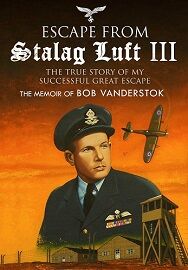
On the night of 24 March 1944, Bram (Bob) Vanderstok was number 18 of 76 men who crawled beyond the barbed wire fence of Stalag Luft III in Zagan, Poland.
Vanderstok's memoir sets down his wartime adventures before being incarcerated in Stalag Luft III and then in extraordinary detail describes various escape attempts, which culminated with the famous March breakout. After escaping, Vanderstok roamed Europe for weeks, passing through Leipzig, Utrecht, Brussels, Paris, Dijon and Madrid, before making it back to England. He reported to the Air Ministry and three and a half months after escaping, on 30 May 1944, he returned to the British no.91 Squadron.
In the following months he flew almost every day to France escorting bombers and knocking down V1 rockets.
In August 1944 he finally returned to his home. He learned that his two brothers had been killed in concentration camps after being arrested for resistance work. His father had been tortured and blinded by the Gestapo during interrogation. He had never betrayed his son.
A donation of 15% of the RRP is donated to the RAF Benevolent Fund with each sale.
The book can be bought from the Pen and Swords Books website.
Extraordinary times. Extraordinary courage.
Here, from the bestselling author of The Great Escape, are eight true and startling escape stories from the Second World War.
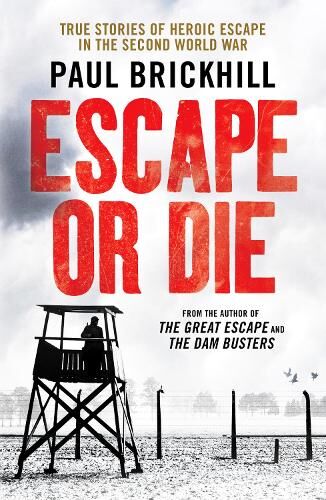
The heroism of the servicemen who dared to defy their captors in this volume is matched only by that of the underground movements and ordinary civilians who helped the escapees in these stories of daring, invention and doggedness against the odds.
From the account of the Spitfire pilot left for dead by an execution squad in Sicily to the story of the air gunner forced to blag his way across the Baltic, every one is an unputdownable classic.
'As long as there are prisons men will try to escape from them; and as long as there is an RAF it will bring to the problems of escape the qualities of high resource, pure cussedness and that indefinable, damnably annoying refusal to lie down when dead, of which all the stories in this book are such excellent - and, I think, such exciting - examples.' H.E. Bates
All proceeds from the sales of this title will be donated to the RAF Benevolent Fund.
Retailing at £9.99, this book is available to purchase from Waterstones.
This 48-page booklet is based on over 20 talks given by the author on the Battle of Britain.
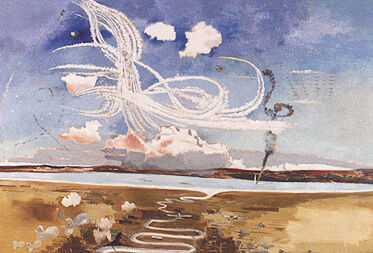
It provides a very readable well illustrated overview, which explains the key features and decisive factors of this crucial Battle which determined our survival as a free country.
The booklet is set out in a logical manner and covers:
- events leading up to the Battle
- key British Leaders
- UK Air Defence System and its world first, integrated Radar Warning System
- Four Phases of the Battletactics and Lessons Learned during the Battle
- aircraft in the Battle
- German Luftwaffe
- contributors to the British Victory
- postscript to the Battle
The booklet is priced £5. To order your copy email: fightfortheskies@gmail.com.
About the author
Dick Collinson has spent his professional career in the Avionics Sector of the Aerospace Industry; mainly with GEC A's Flight Automation Research Laboratory for many years and was awarded the Silver Medal of the Royal Aeronautical Society in 1989 for "his most significant contribution to research and development for advanced avionics equipment and systems and to their service in the UK and abroad".
Since retiring, Dick has written an internationally recognised definitive reference 'Introduction to Avionic Systems', published by Springer. The Third Edition was published in 2011.
Dick is a Committee Member of the Medway Branch of the Royal Aeronautical Society. The Author served in the Royal Navy for two and a half years and is donating 50% of the Profits he receives from the Sales of this Booklet to the RAF, Army and Royal Navy Charities.
Since he was a child in the 1950s watching Vampires and Meteors operating from RAF Turnhouse, Jim Walls wanted to fly aircraft, he just never envisaged that his flying career would be spent in the back seat as opposed to the front.
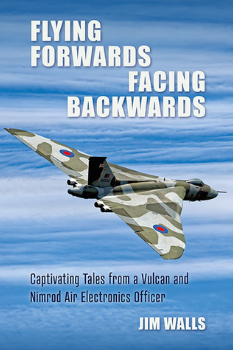
Jim guides readers through his 40-year RAF career that started as a Boy Entrant at RAF Cosford, then as an air radar tradesman, before specialising as an air electronics operator (AEOp) in the Nimrod MR1, and later as an air electronics officer (AEO) who flew in Nimrod R1s and Vulcan B2s.
With detailed insight into the world of radar, electronic countermeasures and signals intelligence, Jim highlights the role they played in warfare for numerous operations during the Cold War as well as the Falklands campaign, First Gulf War and Bosnian War. He also recalls the peacetime role of the Nimrod and Vulcan with stories from his time on 51, 120 and 617 Squadrons. As well as focusing on his career, Jim gives his viewpoint on matters such as Operation Black Buck and the reduced war-fighting capability of the Vulcan as it neared retirement.
This fascinating book showcases the vital role that AEOs held and the importance of radar and electronic warfare in the fight against enemy forces. It is also a tribute to the much-loved Cold War icons, the Nimrod and the Vulcan. With photography throughout, mainly from the author’s personal collection, this book will appeal to Cold War enthusiasts and fans of the iconic jets of that era.
All proceeds from the sales of this title will be donated to the RAF Benevolent Fund.
Retailing at £25.00, this book is available to purchase from Grub Street.
As World War 2 breaks out in September 1939, a young Jack Connors heads for England from his home in County Mayo, Ireland in search of action, adventure and the opportunity to fly aeroplanes.
Travelling to America and Canada for training, he qualifies as a pilot with above average ability, and after a spell instructing, volunteers for service in North Africa supporting the British and American forces as they slowly drive the Axis forces back into Tunisia and eventual defeat.
Connors tells, in his own words, of the contrasts between an affluent and comfortable United States, at the time still at peace, a drab, dark and hungry England, and the scorching hell of desert warfare. Eventually shot down and captured, he makes a remarkable escape, returning to his unit to witness the end of Hitler's ambitions on the continent.
Few have written about this theatre of war. Connors' first-hand account is descriptive, engaging and humorous, appealing to historians, aviation buffs and anyone who enjoys a good yarn.
This book can be purchased for £5.96 for a paperback or £2.95 for a Kindle edition from Amazon.
Jens Müller was one of only three men who successfully escaped from Stalag Luft III in March 1944 – the break that later became the basis for the famous film The Great Escape.
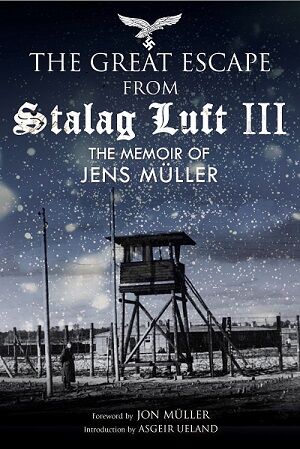
Müller was no. 43 of the 76 prisoners of war who managed to escape from the camp (now in Zagan Poland). Together with Per Bergsland he stowed away on a ship to Gothenburg.
The escapees sought out the British consulate and were flown to Scotland. From there they were sent by train to London and shortly afterwards to 'Little Norway' in Canada.
In a vivid, informative memoir he details what life in the camp was like, how the escapes were planned and executed and tells the story of his personal breakout and success reaching RAF Leuchars base in Scotland.
A donation of 15% of the RRP is donated to the RAF Benevolent Fund with each sale.
The book can be bought from the Pen and Swords Books website.
In this autobiography Sir Arthur outlines his career in the RAF from the early days when he joined the service in 1924, until his retirement in 1961, when he'd reached the rank of Air Marshal.
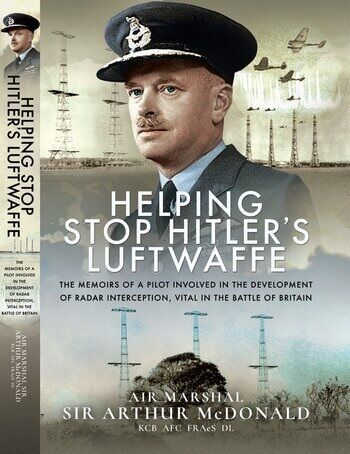
Importantly the book illustrates Sir Arthur's role in the Biggin Hill Experiment which played a vital part in saving Britain from German invasion.
"I hope you young men realise that the whole future of this country depends on what you are doing here at Biggin Hill." Lord Swinton, the Secretary of State for Air at the time, told them when he visited the base. The significance of this was recognized by Adolf Galland, the Luftwaffe fighter ace: 'From the very beginning the British had an extraordinary advantage – radar and fighter control.'
Arthur also explains how, when he was station commander at RAF Duxford during the war, he invented an invisible flare path. This prevented any of the RAF planes at Duxford from being shot down while landing at night by Luftwaffe night intruders.
There is also a description of the little-known Dowding Experiment. This experiment helped to convince the Air Ministry to switch priority in aircraft production from bombers to fighters just in time.
Arthur gives a valuable insight into flight training in the early days of the RAF, with first hand, often amusing accounts. He gives details of important lessons learnt about carbon monoxide poisoning and the effects of anoxia on pilots.
In the early part of the book Sir Arthur also gives fascinating glimpses of his life as a boy growing up in Antigua and how his engineering career started in the Antigua Sugar Factory.
Besides a distinguished RAF career, Sir Arthur was a keen sailor and there are informative accounts of his sailing exploits; including yacht racing in Singapore in the 1930s, winning the Burton Cup in 1937, through to being the oldest competitor in single handed sailing in the 1948 Olympic Games in Torbay.
This fascinating book can be purchased for £20.00 through Pen and Sword's website, through Amazon or support your local bookshop and order a copy through them.
This is the fourth book by Lord Ashcroft in his bravery series.
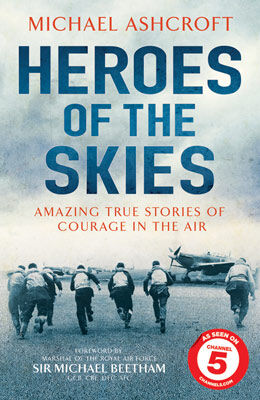
The book tells the remarkable stories behind the world's largest private collection of medals for gallantry in the air that were awarded to more than 80 British, Commonwealth and other Allied airmen.
Heroes of the Skies uses new material from pilots' log books, eye-witnesses, letters, interviews, citations and other sources to tell the stories of air combat, bombing raids and other bravery displayed by airmen as long ago as the First World War and up to the on-going conflict in Afghanistan.
The book will be published by Headline on 13 September 2012. Its foreword has been written by Marshal of the RAF Sir Michael Beetham GCB, CBE, DFC, AFC.
The book has been written in conjunction with a six-part Channel 5 television series, also called Heroes of the Skies, which will be screened in the autumn of 2012.
Presented by Lord Ashcroft, the television series is an ambitious, ground-breaking series which tells the stories of the most heroic airborne combat missions from history.
Using vintage planes such as Spitfires, Lancaster bombers and Phantom fighters the series features realistic mid-air combat sequences in addition to revealing interviews with the last surviving veterans, rare archival footage, cutting-edge computer generated images, and new cinematic techniques to transport viewers back in time to experience the reality of air combat.
Lord Ashcroft, KCMG, has established himself as a best-selling author with his Heroes series. His previous books (all published in hardback and paperback by Headline) were Victoria Cross Heroes (first published in 2006), Special Forces Heroes (first published in 2008) and George Cross Heroes (first published in 2010).
As well as being a military historian and author, Lord Ashcroft is an international businessman and philanthropist. He has built up the world's largest collection of Victoria Crosses (VCs), Britain and the Commonwealth's most prestigious award for gallantry. These decorations are currently on display in the Lord Ashcroft Gallery at the Imperial War Museum London.
Lord Ashcroft was one of the principal donors to the new Bomber Command Memorial in central London, enabling it to be built while some Bomber Command veterans, now in their late 80s and early 90s, are still alive.
All Lord Ashcroft's author's royalties from Heroes of the Skies will be donated to the Royal Air Force Benevolent Fund.
This book recounts the life of Pete Odling who started flying aged 14 with his training on propeller driven aircrafts. Pete's training rapidly proceeded to jet powered aircrafts, going through the Sound Barrier, and then specialising in Bomber Command.
Throughout his flying career Pete tells the memoir of his flight experiences with the beautifully sleek Canberra, and later the mighty powerful Vulcan Mk2. Throughout his service, Pete tells the story of being on high alert, and the adrenalin moments whilst being part of No 617 Dambuster Squadron.
With a passion for flying, Pete shares his later life and his continued joys of flying for fun in small civilian aircrafts, and around France and different parts of the USA.
To purchase this book for £12.50, please email peterodling@btinternet.com.
As a 16-year-old Devonshire lad from the collage of Shaldon, near Teignmouth, Rupert Extence joined the RAF in August 1939 as an aircraft apprentice, just one month before Britain went to war with Germany.
After undergoing training and serving briefly in the UK, he was posted overseas and would spend the next four years away from home "getting his knees brown" - RAF parlance for a tour of duty overseas.
His recollections include descriptions of his life as an RAF apprentice in the early days of war, witnessing air raids in Devon and London, becoming an RAF Aircraftman at 18 and being posted to the Middle East soon afterwards.
This book can be purchased from the Woodfield Publishing website.
His Royal Highness Prince Edward The Duke of Kent KG GCMG GCVO ADC(P), first cousin to Her Majesty Queen Elizabeth II, has devoted his life to the service of his country.
Even before he served twenty-one years as a regular soldier in the British Army, he was introduced to this life of service by his widowed mother, HRH Princess Marina, The Duchess of Kent, during an extensive tour of the Far East at the time of his seventeenth birthday.
His interest in modern technology, especially computing and engineering, in issues of health, fitness and social welfare, and in the development of the intellect, has seen him become the patron, president or active member of more than one hundred charities and social organisations.
His military service, and deep interest in military history, sees him making a particularly important contribution to many military-related organisations – the chief of which must be the Commonwealth War Graves Commission.
At the time of his eightieth birthday on October 9, 2015, Prince Edward remains one of the busiest members of the royal family. This book is offered as a tribute to his life of service, and to the myriad organisations, large and small, local, national and international, that make up the fabric of the United Kingdom in the twenty-first century.
You can purchase the book at johnandcelialee.co.uk.
In early 1942 the Third Reich opened a maximum security Prisoner Of War camp in Lower Silesia for captured Allied airmen. Called Stalag Luft III, the camp soon came to contain some of the most inventive escapers ever known.
The escapers were led by Squadron Leader Roger Bushell, code-named 'Big X'. In March 1944, Bushell masterminded an attempt to smuggle hundreds of POWs down a tunnel build right under the noses of their guards. Behind the scenes photographs from The Great Escape film are included in this definitive pictorial work on the most famous POW camp of the Second World War.
A donation of 15% of the RRP is donated to the RAF Benevolent Fund with each sale.
The book can be bought from the Pen and Swords Books website.
Memories of a Different World tells the story of the comradeship of those who served in Bomber Command.
Author Charles Gallagher was himself a member of Bomber Command, completing an Operational Tour during the last winter of the Second World War.
The book costs £7.99 and is available to buy online.
This book explores Operation Oyster which was carried out on 6 December 1942 by 2 Group RAF.
The operation was considered a notable success for the Allies, striking at the very heart of what Churchill termed 'the wizard war' against German radio navigational technology, by attacking a central hub of activity; the Philips Radio Works in Eindhoven.
The development of electronics in WWII was the most significant technical aspect of weaponry over the course of the conflict.
On both sides, there were great advances in radar and communications, which at that time, depended on the wide-scale use of high frequency radio valves. The Phillips Radio Works was one of the leading companies in Europe, thus making it an important target.
Ninety-three allied aircraft took part in the operation and fourteen were lost, however the result in terms of damage to the enemy was considerable. Yet the story of the raid has been under reported, and the efforts of the aircrew who took part have been little recognised.
By comparison, the Dambuster raid, which came just six months later, has entered into folklore. Here, for the first time, the overlooked Oyster raid is afforded the attention it deserves.
Operation Oyster by Kees Rijken, Paul Schepers and Arthur Thorning can be bought on the Pen and Swords Books website.
The sometimes scary and often funny world of flying in the Royal Air Force – as told by some of those who were there. Foreword by Air Marshal Cliff Spink.
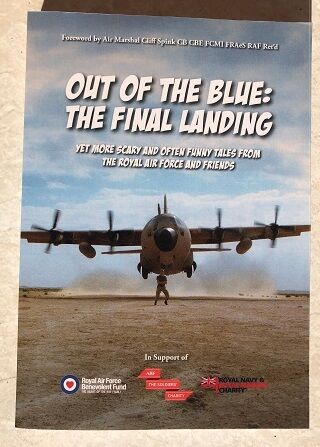
There's a saying in the Royal Air Force: if you can't take a joke, you shouldn't have joined. It's a perfect example of the wry humour that permeates the mind-set of RAF personnel, and it resonates throughout this book.
Whether the tale is set in the air or on the ground, it offers a glimpse of what life was, and probably still is, really like in the RAF.
Over a period of two years, three ex-military pilots, who joined the RAF on the same day and have been life-long friends, collected the stories.
Sometimes terrifying, occasionally outrageous, and frequently funny, they show that the business of flying military aircraft sporadically throws up challenges that even the most capable of aviators struggle to meet.
Many of the events recounted here happened during the Cold War, when the surreal world of potential nuclear conflict was the backdrop to day-to-day operations, and nearly all the stories appear in print for the first time.
The book appears in print thanks to the generosity of sponsors, Halldale, CAE and BAE Systems, and all proceeds are shared between the RAF Benevolent Fund and other military charities.
To order a copy of any of the three Out of the Blue books please call us on 020 7580 8343. You can also listen to the brand new Out of the Blue podcast here.
Jacob ('Jack') Goldstein was mid-upper gunner in a Lancaster bomber when it was shot down during Bomber Command’s final WW2 mission to Nürnberg.
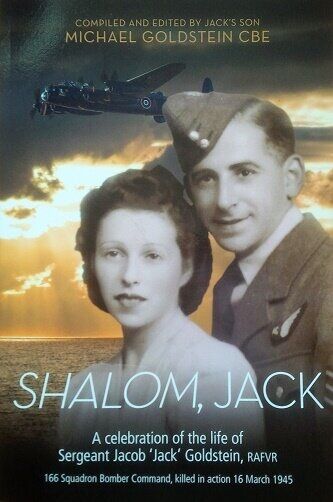
It was the night of 16 March 1945, just a few weeks before the war ended. He was the only member of the seven-man crew to be killed.
The title of the book derives from the simple entry 'Shalom!' that Jack's widow, Sadie, poignantly wrote in the book of remembrance at the Dürnbach War Graves Cemetery where Jack is now buried. This book is therefore a tribute to Sadie as well as to Jack, and to the many thousands of others in Bomber Command who gave their lives for world freedom.
'Shalom, Jack' traces Jack's family origins in an impoverished and oppressed village near Warsaw, and describes his mother bringing him to England aged just 17 months. They were one of thousands of families who fled the increasing discrimination and persecution facing Jewish people in Eastern Europe just before the start of WW1.
The book vividly relates in detail the struggles of Jack's upbringing amongst the poverty and deprivation of London's East End, overwhelmingly tempered by the love and happiness of his family and growing up as one of eleven siblings. It describes his marriage to Sarah ('Sadie') Goldberg, whose parents also came to the UK as immigrants from Poland.
This book traces Jack's service in the RAF Volunteer Reserve and sets out his operational record as mid-upper gunner in Lancaster bomber RF154 of 166 Squadron, Bomber Command. It includes detailed accounts from fellow crew members of the events of that fateful night, 16 March 1945, when they were shot down by a German night-fighter, and all but Jack baled out to eventual safety.
Shalom, Jack is based on painstaking and well-documented research, eye-witness accounts, and personal recollections. It incorporates numerous photographs, documents and illustrations, and includes detailed references and notes. Insightful, analytical, emotional and at times humorous, the book describes with great sensitivity the traumas of war-time England, the profound importance of family, and the devastating impact of Jack's death.
It will be of particular appeal to those with interests in the history of the RAF and Bomber Command, life in London between the wars, social history of the 20th century, immigration, and Anglo-Jewish family life. Coming at a time when immigration, Europe, and anti-Semitism continue to be topical discourse, and in the year of the 100th anniversary of the RAF, Shalom, Jack is both timely and relevant to Britain today.
The book is available from Amazon and other booksellers, but also and conveniently from the author. Just email michael.goldstein@btinternet.com stating the number of copies needed and the delivery address(es). The UK price is £12.95 plus £2.05 P&P First Class for a single copy.
All income will be donated to the RAF Benevolent Fund and the Royal British Legion.
Snuggle, Puggle & Puff has been written by a serving member of the Royal Air Force.
Mr Stewart M Jackson wrote this story so that when he deployed around the world his son could have it read to him. Snuggle, Puggle & Puff is a bedtime story for 1 – 7 year olds. It tells the story of three cute little creatures that come to you, through a magic door, when you’re asleep. They take things from your room but always leave some 'Sleepy Sand' in the corner of your eye as a thank you.
Snuggle, Puggle & Puff is the first of 3 books in the series.
This book can be purchased for £4.99 for a paperback or £2.16 for a Kindle edition from Amazon.
Between dusk and dawn on the night of March 24-25 1944, a small army of Allied soldiers crawled through tunnels in Germany in a covert operation the likes of which the Third Reich had never seen before.
Jonathan Vance tells the incredible story that was made famous by the 1963 film, The Great Escape. The escape is a classic tale of prisoner and their wardens in a battle of wits and wills. The brilliantly conceived escape plan is overshadowed only by the colourful, daring (and sometimes very funny) crew who executed it – literally under the noses of German guards.
From their first days in Stalag Luft III and the forming of bonds key to such exploits, to the tunnel building, amazing escape and eventual capture, Vance's history is a vivid, compelling look at one of the greatest 'exfiltration' missions of all time.
A donation of 15% of the RRP is donated to the RAF Benevolent Fund with each sale.
The book can be bought from the Pen and Swords Books website.
Someone once said that there'd be no great poetry from the Second World War such as there was after the First. The poems in this collection have proved this to be a fallacy.
The attrition of Bomber Command aircrew probably came closer to emulating the carnage of trench warfare on the Western Front than any other campaign, and the emotions and impressions of those serving are captured in stark reality by the words contained in this anthology.
Almost all the poems were written by Bomber Command airmen at the time, or whilst their ordeal was still fresh in their minds. It is heartfelt, poignant and intensely moving; at times it also reflects the humour and determination of a breed of very young men and women who were, without a doubt, our greatest generation.
Steve Allen and Ken Marshall started collecting Bomber Command poems when they discovered each had a close relative who had served on bombers and had also written poems about their experiences. It's been a labour of love and respect for the brave boys of Bomber Command. These may just be words, as the title suggests, but they are words that sit rightfully along the equally magnificent men of the previous generation such as Rupert Brooke, John Macrae and Wilfred Owen, whose own works are celebrated.
Read, be moved and remember.
This book can be purchased for £8.99 for a paperback and £2.70 for a kindle edition from Amazon.